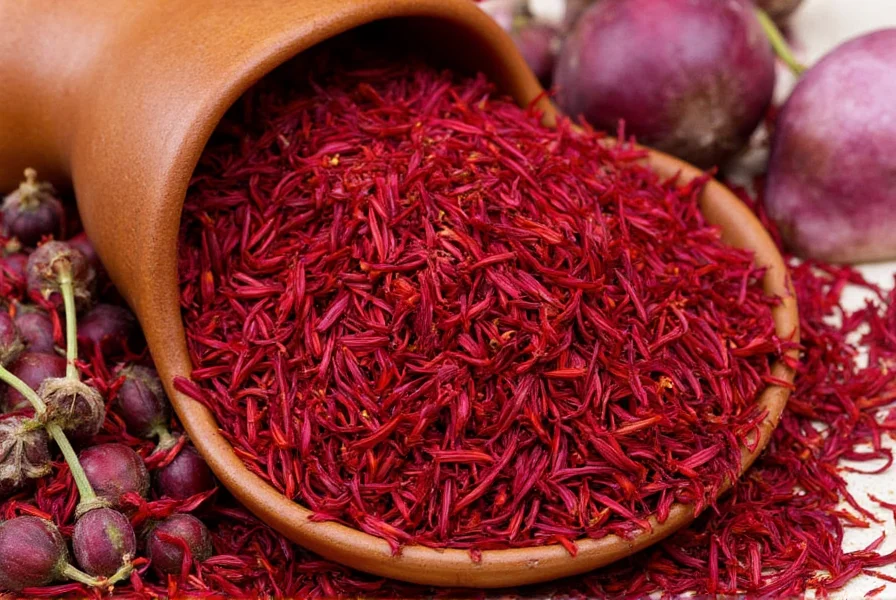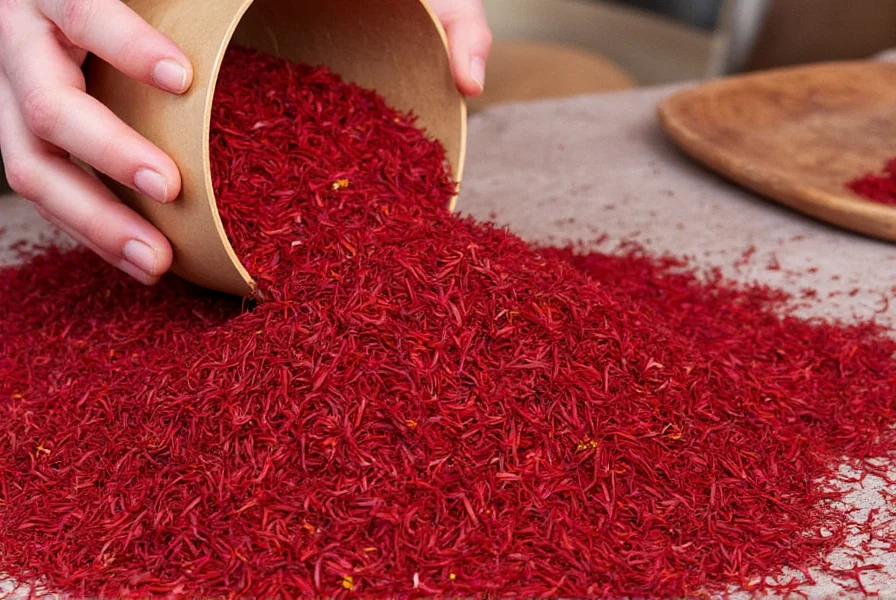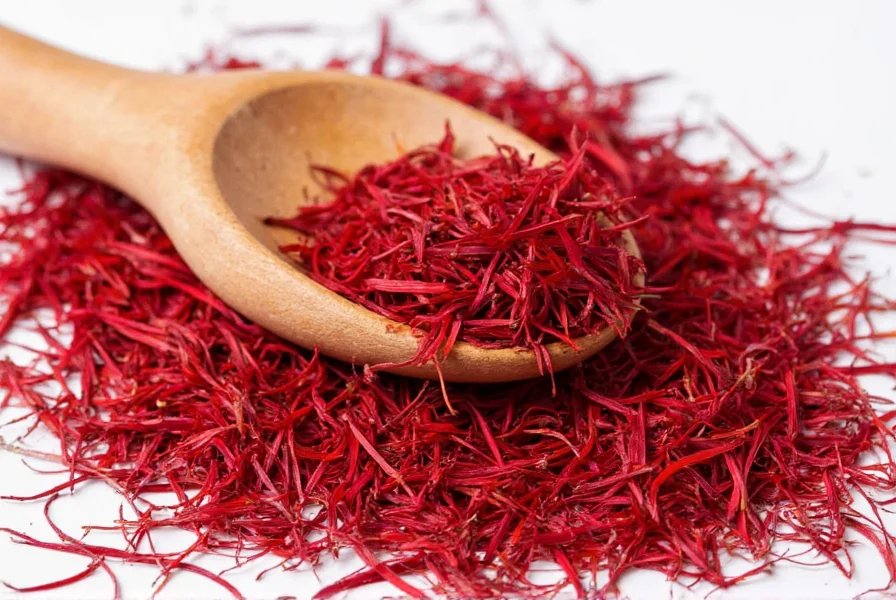Saffron's status as the most expensive spice in the world isn't merely a marketing claim—it's an economic reality rooted in biology and human labor. When you search for the most expensive spice, you're likely seeking not just a name, but understanding of why certain spices command such extraordinary prices. This comprehensive guide explores saffron's reign at the pinnacle of spice economics, examining the intricate factors that justify its premium cost while comparing it to other luxury spices.
The Labor Behind the Luxury: Why Saffron Costs More Than Gold
Saffron's astronomical price tag directly correlates to its painstaking harvesting process. Unlike mechanized spice production, saffron requires human hands at every critical stage:
- Flower specificity: Only the three red stigmas of the Crocus sativus flower are used
- Time sensitivity: Blooms open at dawn and must be harvested within hours
- Manual precision: Workers must delicately pluck stigmas without damaging the fragile threads
- Drying requirements: Fresh stigmas lose 80% of their weight during careful drying
This explains why saffron price per ounce ranges from $800-$1,600 for premium grade (ISO 3632 category I), making it more valuable by weight than many precious metals. The "why is saffron so expensive" question ultimately answers itself when you witness the 40-hour workweek required to produce just one ounce of the highest quality threads.
Global Saffron Production: A Geographic Advantage
Iran dominates global saffron production, accounting for over 90% of worldwide supply. The Khorasan region's unique climate creates ideal growing conditions, though smaller producers in Spain, India, and Greece maintain distinctive regional varieties. This concentration affects both quality and pricing:
| Production Region | Annual Output (kg) | Price per Gram ($) | Distinctive Characteristics |
|---|---|---|---|
| Iran (Khorasan) | 400,000 | 11-15 | Strongest color, moderate aroma |
| Spain (La Mancha) | 15,000 | 15-20 | Balanced flavor, premium branding |
| India (Kashmir) | 12,000 | 18-22 | Intense aroma, deep color |
| Greece (Krokos) | 7,000 | 20-25 | PDO protected, floral notes |
These regional differences explain why saffron price per ounce varies significantly across markets. Kashmiri and Greek varieties command premium prices due to limited production and distinctive flavor profiles, while Iranian saffron offers better value for commercial use.

Comparing the World's Most Valuable Spices
While saffron reigns supreme, several other spices occupy the luxury tier of the spice market. Understanding these comparisons helps contextualize saffron's position:
- Vanilla: $600-$1,200 per pound - The second most expensive spice requires hand-pollination and lengthy curing
- Cardamom: $30-$100 per pound - Premium green varieties from Guatemala command highest prices
- Long pepper: $50-$80 per pound - Historical significance drives artisanal market demand
- Grains of paradise: $40-$70 per pound - West African spice gaining culinary popularity
The "saffron vs vanilla cost" comparison reveals why saffron maintains its top position—vanilla's $1,200 maximum per pound pales against saffron's $10,000 ceiling. This dramatic difference stems from vanilla's relatively efficient production process compared to saffron's extreme labor requirements.
Authenticity Challenges in the Saffron Market
The high value of saffron creates significant counterfeiting risks. When purchasing this expensive spice, consumers should watch for these red flags:
- Unrealistically low prices (authentic saffron cannot cost less than $5 per gram)
- Uniformly dark red threads (premium saffron shows color gradation)
- Excessive yellow styles attached to threads
- "Saffron" that instantly colors water (real saffron releases color gradually)
Reputable suppliers provide ISO 3632 certification indicating color strength (coloring power), flavor, and aroma measurements. This standardization helps consumers evaluate whether saffron is worth the price based on objective quality metrics rather than marketing claims.

Practical Applications: Is Saffron Worth the Investment?
Despite its cost, saffron delivers exceptional value when used properly. A single gram (about 30 threads) can flavor 4-6 servings of rice, making the per-serving cost surprisingly reasonable. Professional chefs and home cooks maximize value by:
- Crushing threads with a mortar and pestle before use
- Steeping in warm liquid for 15-20 minutes to extract full flavor
- Using in dishes where its unique flavor profile shines (paella, bouillabaisse, risotto)
- Storing properly in airtight containers away from light
The "is saffron worth the price" question ultimately depends on understanding its culinary role. Unlike many spices, saffron contributes both distinctive flavor and vibrant color that cannot be replicated by substitutes. When evaluating expensive spices, consider saffron's dual functionality as both flavoring and natural coloring agent.
Historical Perspective on Luxury Spices
Saffron's status as the most expensive spice in the world isn't new—it has maintained this position for millennia. Historical records show saffron trading for its weight in silver during ancient Persian and Roman eras. The spice's value stems from consistent production challenges that modern technology has barely mitigated. While other luxury items have seen production efficiencies, saffron remains stubbornly resistant to mechanization, preserving its elite status among the world's most valuable spices.
Frequently Asked Questions
Why is saffron the most expensive spice by weight?
Saffron is the most expensive spice because each flower produces only three usable stigmas that must be hand-harvested within a narrow time window. It takes approximately 75,000 crocus flowers to produce one pound of saffron, requiring immense human labor that cannot be mechanized.
How much does real saffron cost per ounce?
Authentic saffron costs between $800 and $1,600 per ounce for premium grade (ISO 3632 category I). Lower quality saffron may cost $500-$800 per ounce, but prices below $500 per ounce typically indicate counterfeit or diluted product.
What's the difference between saffron and turmeric as substitutes?
While turmeric provides similar yellow color, it lacks saffron's distinctive floral-honey flavor and complex aroma. Turmeric costs about $0.02 per gram compared to saffron's $11-$22 per gram. No substitute replicates saffron's unique flavor profile, though some dishes use turmeric for color when saffron is prohibitively expensive.
How can I verify I'm buying authentic saffron?
Check for ISO 3632 certification, examine threads for color gradation (red tips fading to orange), perform a water test (real saffron releases color slowly over 15+ minutes), and ensure pricing aligns with market rates ($10-$22 per gram for premium quality). Reputable suppliers provide documentation of origin and quality testing.
Which country produces the highest quality saffron?
Iran produces over 90% of the world's saffron, with Khorasan region yielding the most consistent high-quality product. However, Kashmiri saffron from India and PDO-protected Krokos saffron from Greece command premium prices for their distinctive flavor profiles and limited production.











 浙公网安备
33010002000092号
浙公网安备
33010002000092号 浙B2-20120091-4
浙B2-20120091-4